#paweł szypulski
Explore tagged Tumblr posts
Photo
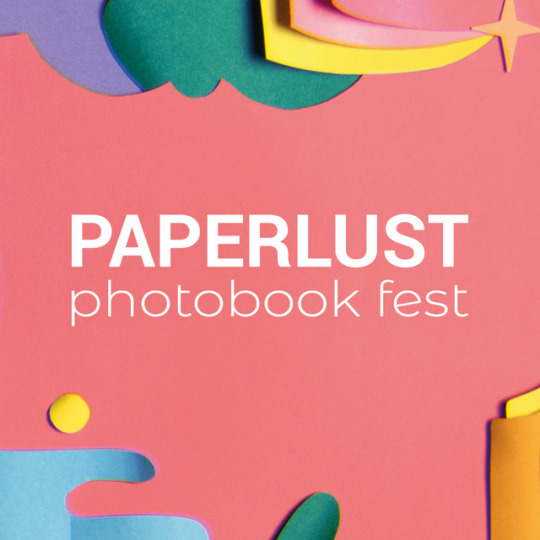
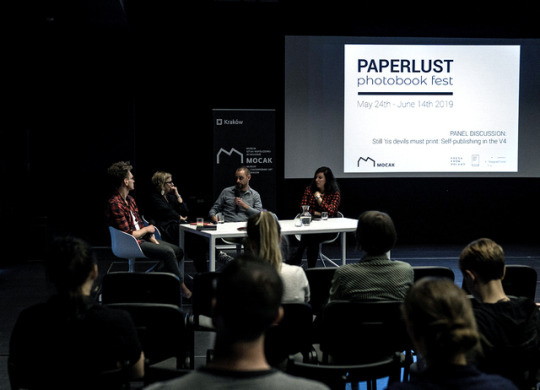
THE FIRST EDITION OF PAPERLUST PHOTOBOOKS FEST IS OVER!
IT COULD NEVER HAVE HAPPENED WITHOUT OUR PARTNERS, GUESTS, ARTISTS, VOLUNTEERS AND GUESTS. THANK YOU ALL!
by Fresh From Poland & Paper Beats Rock, funded by International Visegrad Fund
24.05 – 14.06.2019, Kraków
Paperlust Photobook Fest is a new biennial on the map of photographic events in Europe, stemmed from love to paper. Fest focuses on regional collaboration and aims to present the local self-publishing scene to the wider audience. The motivation behind the festival is to allow discovery while encouraging artistic exchange and explore the power of self-publishing as an offline medium, co-existing in the era of the Internet. PAPERLUST programme is formed of exhibitions, talks, book signings, panel discussion, workshop, photobook fair, reading room (chill zone and library) and dummy review. We invite small publishers, makers and established artists to present their practices, ranging from self-made publications and zines to book objects, albums, and photobooks published by the established institutions. As a reoccurring event, the festival aspires to become a photobook hub in Central and East Europe.
First edition – PAPERLUST Photobook Fest 2019. Art and self-publishing as a tool for social change is focused on the Visegrad region and has been created in close collaboration with the festival’s partners from Slovakia, Czech, and Hungary. It intends to gather local institutions, publishers, non-profit organizations and makers together to increase the visibility and exposure of the artists using photobooks to tell their stories, as well as strengthen, connect and empower the local art scene.
---
PAPERLUST PHOTOBOOK FEST OPENING & PHOTOBOOK. ASSET EXHIBTION OPENING GALERIA I!, KRAKÓW, 24.05.2019

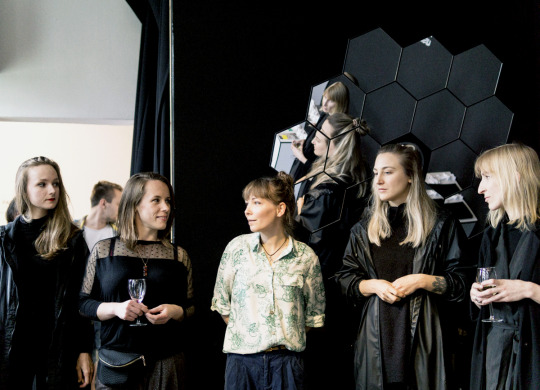
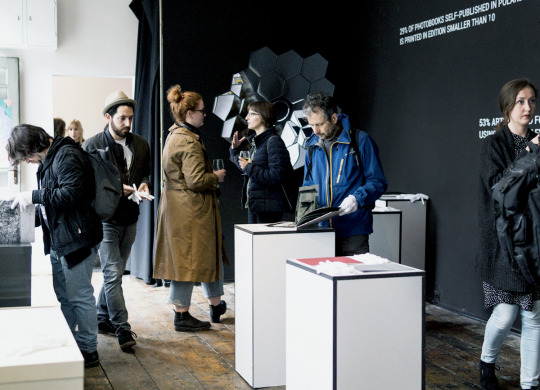
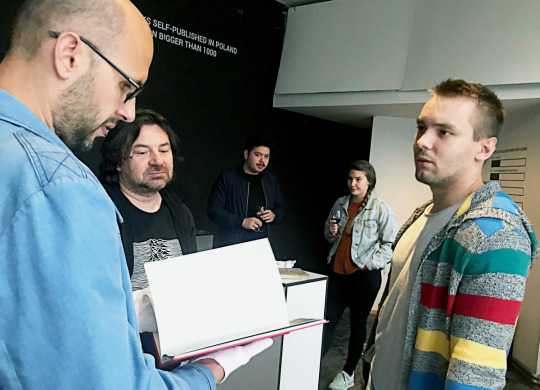
PHOTOBOOK. ASSET EXHIBTION GALERIA I!, KRAKÓW, 24.05.2019
Exhibition Asset focuses on the economic and prestige aspects of art publications. An artistic book has become a tool for the emancipation of artist-maker. Having printed publication allows in an almost automatic way to get into the field of the world of art, or rather the history of art. It is often made with the purpose of creating a unique object, that might become a cultural asset.
Except for the context criterion, we do not have any other criteria for evaluation, what is a work of art and what is not. In any case, however, we need legitimacy – perhaps as time passes, distribution of power and who has the legitimacy to evaluate and give the status to a work of art will change. However, traditional, institutional bodies are still holding a strong position. Even though artists, as well as publishers, say that books are overproduced, that there is no environment, not enough audiences or market, publishing an art book still seems to be amongst the best ways to build up one’s position in the art world.
The exhibition presents the selection of books made with a purpose to become an asset, a self-standing piece of art, to bring an income or to became a valuable, collectable object.
Artists: Petr Fabo, Ivars Gravlejs, Agata Grzybowska, Blanka Győri and Máté Labu, Hubert Humka, Dominika Jackuliakova, Libuse Jarcovjakova, Martin Kochan, Wawrzek Kolbusz, Peter Kollanyi, Martin Kollar, Wojtek Mazan, Peter Puklus, Łukasz Rusznica, Michał Siarek, Jakub Stanek, Krystyna Jędrzejewska-Szmek & Łukasz Gniadek, Beatrix Szörényi, Milan Tittel, Tereza Zelenkova


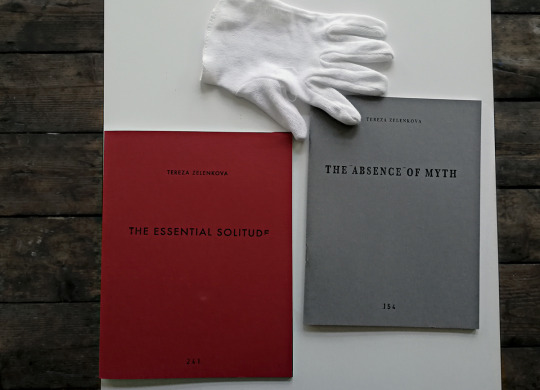
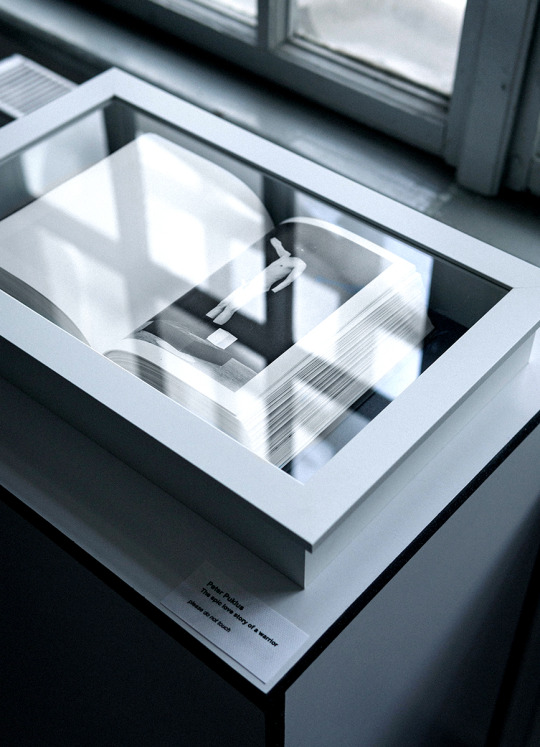
PHOTOBOOK. STORYTELLING EXHIBTION
ZNACZY SIĘ, KRAKÓW, 24.05 – 14.06.19
The show is a part of the series that focuses on various aspects of the photobook. A carefully designed exhibition presents the most interesting samples of the photobooks from the Visegrad region, that have been made out of the need to convey, usually a personal, story. Most of the presented works are either self-published or published in small editions, including hand-made or low-cost printed zine publications.
A book, as depicted in the show, becomes the means for communicating one’s personal experience, a cultural experience and the same time becomes an instrument protecting such experience from oblivion. The leitmotiv of a narration underlines the role of the recipient as an active participant/interpreter of the work of art.
Low-cost self-publishing is here a starting point for a polemic about the nature of the medium. The dissemination using the most economic and least demanding means gives it the power of an independent statement. The questions asked by the authors are an attempt to reflect on the phenomena of this type of publications on the Central European market, their role, ways of production and presentation, as well as expectations of the recipient.
Artists: Tabori Andras, Ewa Behrens, Eva Benkova, Stanislav Briza, Radek Brousil, Jan Brykczynski, Magda Buczek, Kateřina Držková, Peter Fabo, Viola Fátyol, Lucia Gamanová, Aurélia Garová, Agnieszka Gotowała, Anna Hornik , Tomoya Imamura, Zuzana Ivašková, Tereza Kabůrková, Ines Karčáková, Joanna Margarethe Kischka, Deana Kolencikova, Jan Kolský, Viktor Kopasz, Paulina Korobkiewicz, Andrea Kurjakova, Katarzyna Ewa Legendź, Tomasz Liboska, Michał Loba, Alicja Łabądź, Maciej Moskwa, Boris Németh, Anna Orłowska, Krzysiek Orłowski, Ivana Paleckova, Igor Pisuk, Marcin Płonka, Piotr Pytel, Krzysztof Racoń, Kaja Rejczel Rata, Anka Sielska, Jakub Stanek, Juraj Starovecký, Dorota Stolarska, Eva Szombat, Budha Tamás, Jiri Thyn, Balázs Varju Tóth, Ondrej Urban, Imrich Veber, Dorotteya Veykony, Ján Viazanička, Lukasz Wierzbowski, Karolina Wojtas, Adrian Wykrota, Ficsór Zsolt, Kasia Zolich, KWAS (Karolina Wojtas, Agnieszka Sejud)
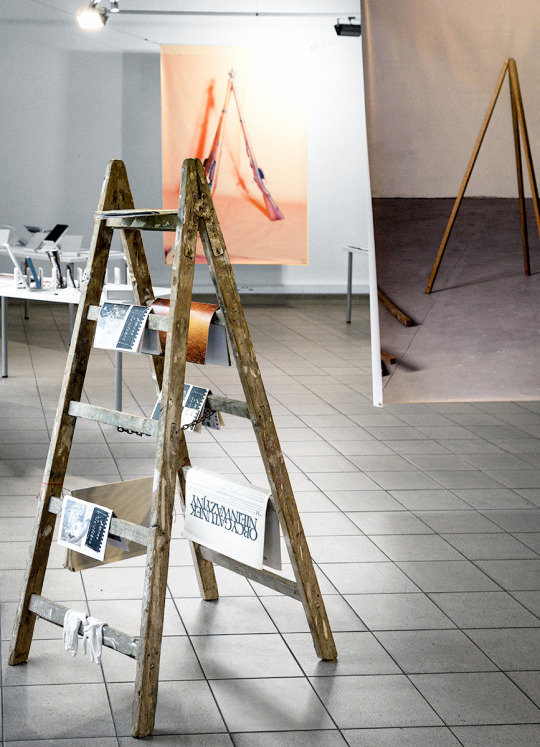
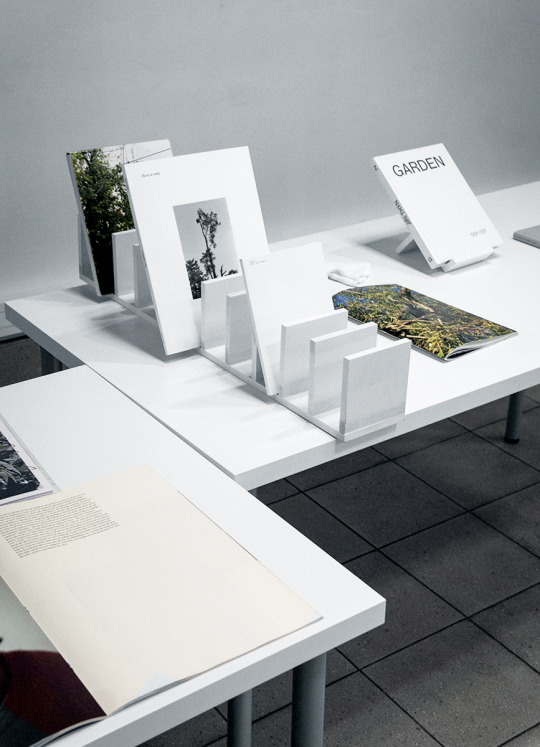
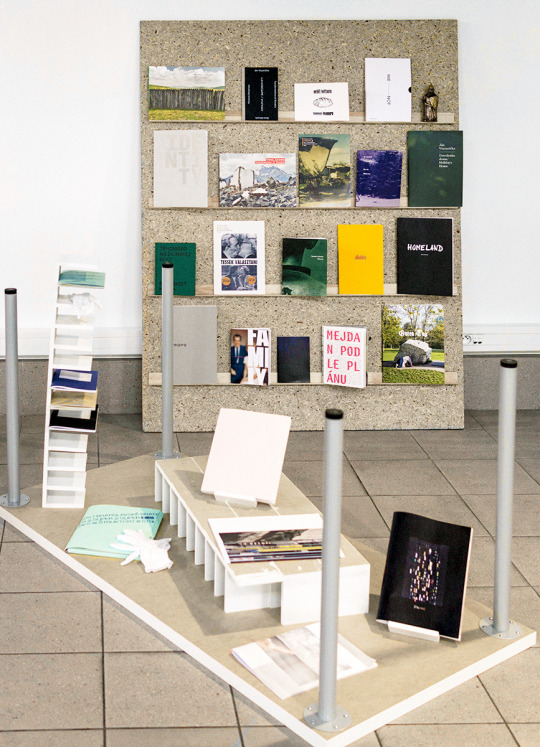
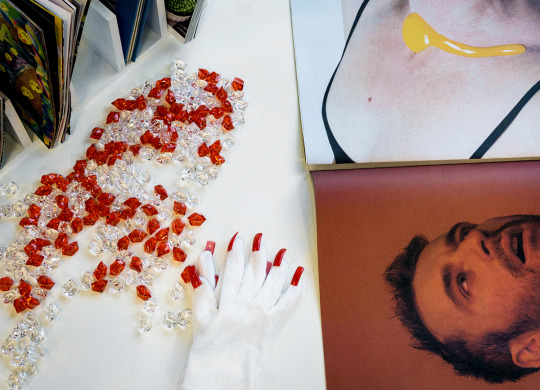
PHOTOBOOK. PROCESS EXHIBTION
NOŚNA GALLERY, KRAKÓW, 24.05 – 14.06.19
In this exhibition, we treat objects of art as a consequence and as an event. We explore the medium of a book as a work in progress submerged in group work, culture, and its own particularities. The exhibition investigates photobooks as a constantly evolving medium in relation to its potentiality. It includes drafts, dummies, sketches, and excerpts from different stages of the work that cannot be completed.
Referring directly to the activities related to the book in a political context, here also the core idea is an artistic prosumer activity, or more precisely its aspect pertaining to work with an art object, that is done by a particular group/ collective. The work created in this way is a result of the vision and ideas of all those involved in the creation process. We want to open a dialogue on the role of a photo editor in photographic publications. We want to define the route which the author- photo editor relation is going through and tension it generates through the choice of photographs, arrangement, strategy – a cycle of events related to the photographic book.
Process exhibition emphasizes a special presence and interactive lecture by Viktor Kopasz and his lifelong process of creating Diaries.
Kopasz’s works become a starting point to think about a book in terms of a multidimensional process. The process can be considered from the perspective of an artist, as a work that can be presented synchronously – from idea to implementation – or asynchronously, as a kind of spiral, which concentrically returns to the centre, and can be looked at from different positions. By disrupting the order of the beginning and the end, the book appears as a final product of the process, enters into a new cycle – that varies depending on the adapted presentation and distribution strategy.
It is a more specific kind of self-publishing, in the context of the previous examples, as it functions as a work of art on the border of the avant-garde, ready-made and niche, crafted publications. Kopasz consciously plays with the medium, its content, and formal potential.
Artists: Jakub Bors, Kuba Dabrowski, Tomoya Imamura, Viktor Kopasz, Tomasz Laczny, Konstancja Nowina Konopka Książki twórców indywidualnych: Anna Ádám, Milan Adamčak, Hynek Alt, Aleksandra Vajd, Ján Ballax, Jakub Chromiński, Krystian Daszkowski, Peter Fabo (Petr Black FaBox), Lukas Hofmann, Nat Marcus, Alek Janicki, Karolina Jonderko, Ines Karčáková, Barbora Klímová, Paulina Korobkiewicz, Markéta Magidová, Barnabás Neogrády-Kiss, Lucia Nimcova, Lucia Papčová, Monika Pascoe Mikyskova, Tomas Pospech, Peter Puklus, Maciek Przemyk (Maciek P Myk), Catarina Simão, Anna Małgorzata Stankiewicz, Marta Szymanowska, Paweł Szypulski, Martina Šárovcová aka Kosmo Nauty – stories, Jan Sipocz, Bartłomiej Talaga, Konrad Trzeszczkowski, Imrich Veber, Karolina Zajaczkowska Książki grup twórczych: Časopis X o súčasnej kresbe, Hurrikan Press, If I saw that in a gallery I would say, this is art, Paper Beats Rock workshop dummies
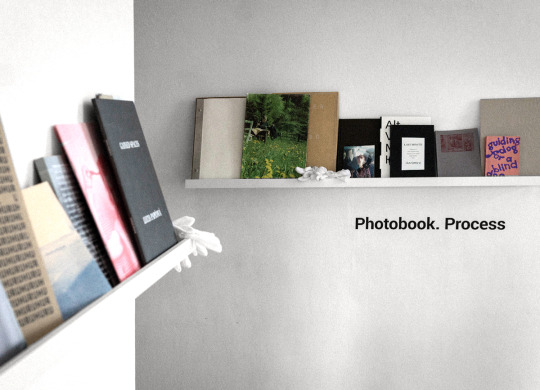
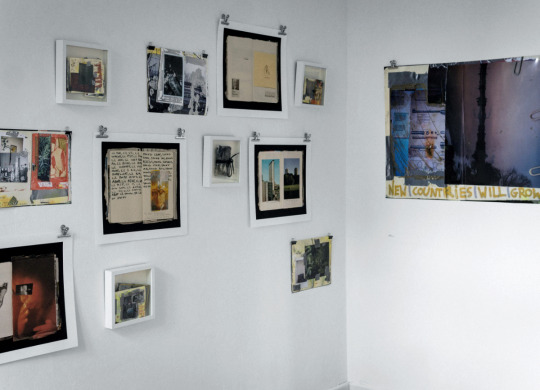
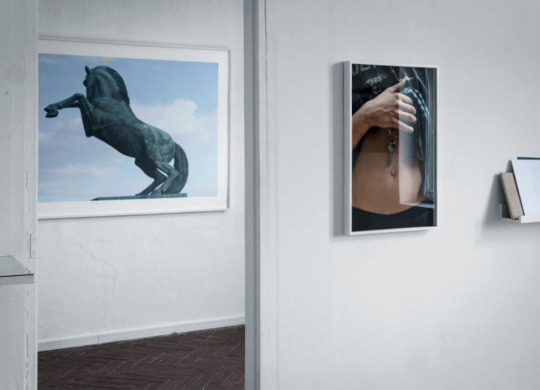
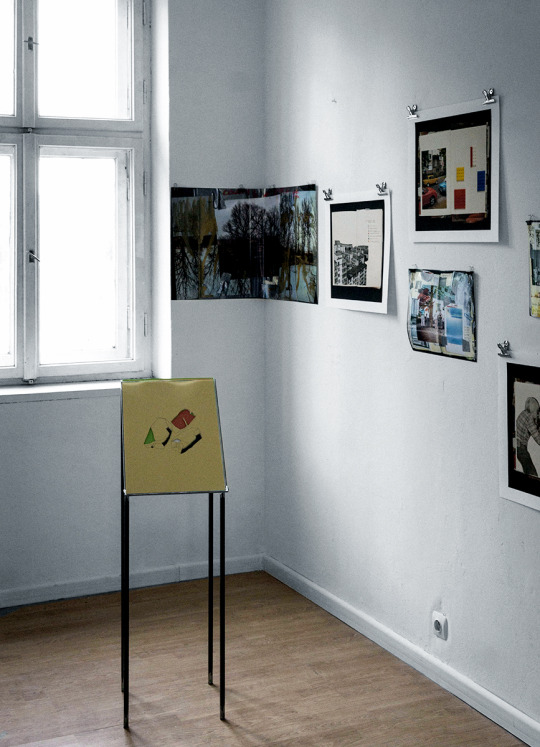
VIKTOR KOPASZ. PROCESS. PROLONGED IDENTITY. OPEN STUDIO
APTEKA GALLERY, KRAKÓW, 25.05 – 27.05.19
Our ambition is to involve the artist in the process of creating. Therefore, for a limited time, we want to change the gallery’s window into an artist’s studio. Artist, being present, will allow the viewers to look at a photographic book as part of a broader phenomenon. The artist is working for 3 days in the window of the gallery. The temporary display changes every day. It might be a radical move or a subtle shift of meaning that we can follow alongside the process.
The presentation of the works and performative character of the exhibition by Viktor Kopasz allows placing the contemporary phenomenon of the book boom in a historical context while creating an experience of the process itself in real time.

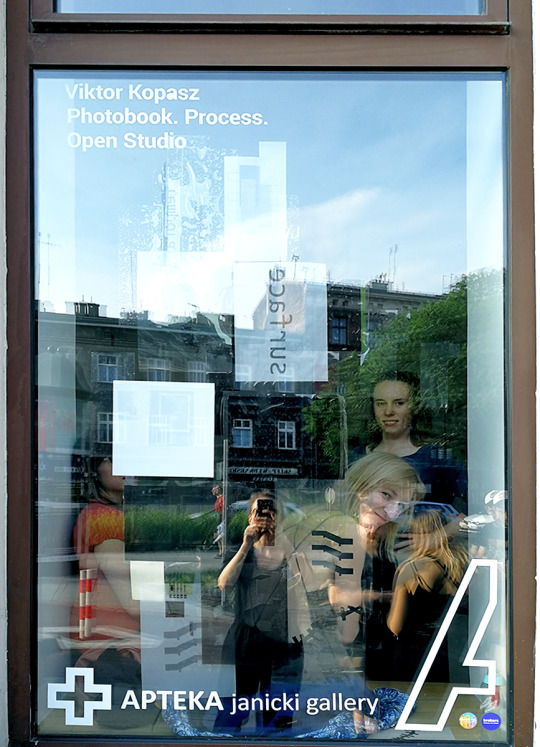
TOMASZ ŁĄCZNY. PROCESS. C18FE7N18. OPEN STUDIO
APTEKA GALLERY, KRAKÓW, 01.05 – 02.06.19
A live book-making process. The artist creates a hand-made photography artbook using traditional photography techniques with elements of improvisation (taking advantages of technical errors of wet plate photography). It’s the final step of the personal project “It All Is. And Nothing”. The audience has an opportunity to experience work in progress in the experimental stage of the process.
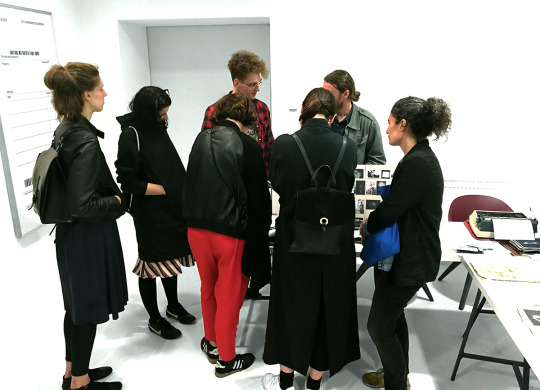
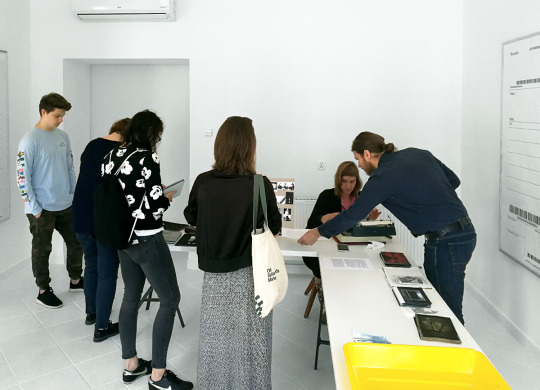
OPEN LIBRARY & CHILL ZONE + KIDS ZONE
MOCAK LIBRARY, KRAKÓW, 24.05 – 14.06.19
If you would like to explore art books in a quiet and peaceful space, Chill Zone is a place to sit down and discover our reading room. It is located in a beautiful and bright MOCAK Library. Presented publications – zines, photobooks, small editions’ publications from Visegrad countries – come from the MOCAK and Paper Beats Rock collections, private collectors, artists and the open call.
We invite kids to spent time in our Kids Zone, space prepared specially for youngest fans of paper.
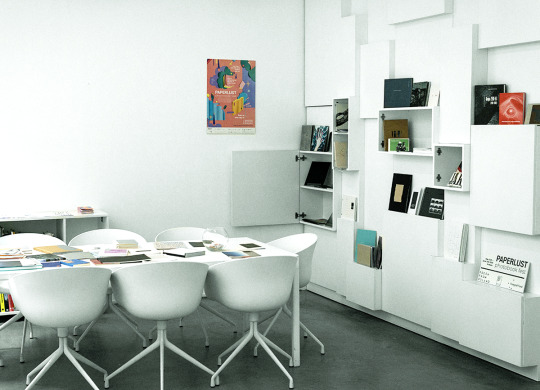
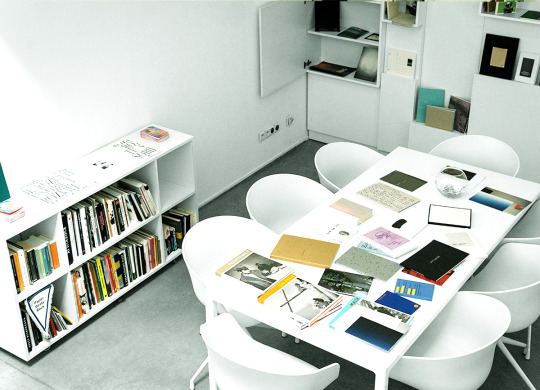
PHOTOBOOK DUMMY REVIEW
TYTANO, KRAKÓW, 02.06.19
Paperlust Photobook Dummy Review is a project intended for emerging artists working with the medium of photography and art books. Event will allow to connect young talents with professionals, publishers and curators from different countries.
The Tytano space will open for one day for face-to-face discussions over the photobooks in progress. Submissions are open to everyone over 18 years old. Selected artists will be invited to meet four of our international experts. Handmade dummies are in focus, although digital projects and small self-published editions are also taken under consideration. The main aim of the event is to help artists to develop the ideas they are already working on.
On Saturday, 1st June, we invite all of the Participants and Experts of Photobook Dummy Review to join the Portfolio Evening, a special joint event organised by Krakow Photomonth and Paperlust Photobook Fest.
Our Experts: Franek Ammer, Stanislav Briza, Zsolt Ficsor, Zuzana Flaskova, Gábor Arion Kudász, Wiktoria Michałkiewicz, Tereza Rudolf, Olija Triaška Stefanovič
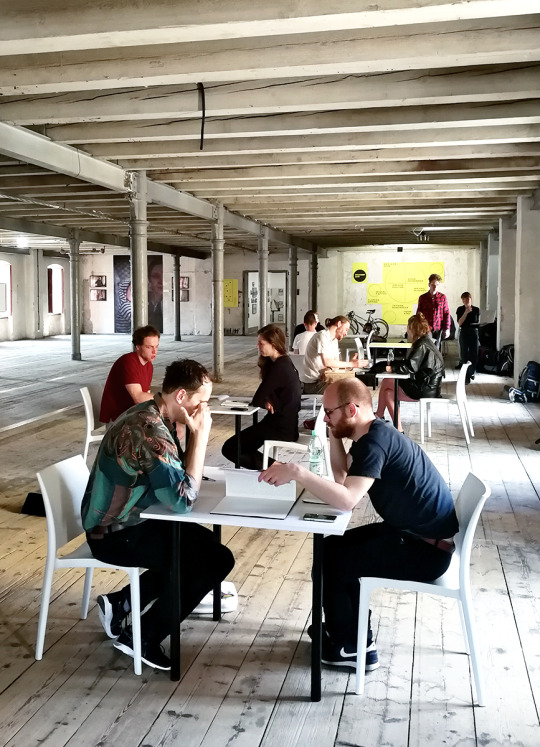
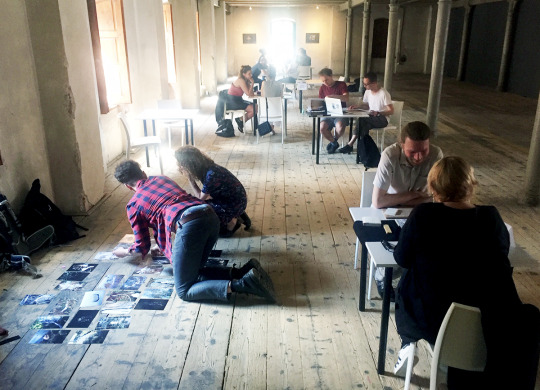
STILL ‘TIS DEVILS MUST PRINT – ARTIST TALKS
MILK, KRAKÓW, 01.06.19
Series of 3 talks focusing on different aspects of the photobook and self-publishing in Visegrad Group countries will take place at Milk Studio. Subjects TBA.
Self-publishing practices in Hungary in the post-digital era/ Beata Istvánkó
The notion of artists’ publishing activities has changed over the past decades, in particular with
the expansion of the art market and the globalization of artistic practices, combined with the advent of the digital era and the introduction of new modes of production and circulation. Print and digital projects employ experimental formats and blur distinctions between art press, curatorial
experiments, and other publishing enterprises. The aim of the presentation is to summarize the history of independent art publishing in Hungary after 2000 through the activity of the Budapest based ISBN books+gallery.
The ISBN is a contemporary art bookstore and a gallery space established in 2017. The name of the gallery was obtained from the 13-digit identification number for publication, the ISBN-number (International Standard Book Number). The most important mission of the ISBN books+gallery is to map, collect, exhibit and distribute the domestic and regional, Hungarian and foreign language, new and second-hand contemporary art publications, exhibition catalogues, zines, art books, photobooks and theoretical publications.
Young scene of photobook makers in Slovakia/ Olja Triaška Stefanović
Five years ago students from the Department of Photography and New Media at the Academy of Fine Arts and Design, Bratislava, Slovakia showed great interest in making photobooks within their visual researches. Olja Triaška Stefanović, together with her colleague Juraj Blaško from Visual Communication department, realized that it is necessary to open new and interdisciplinary course, that will link two departments and prepare students to make more professional photobooks. They created and started together to teach, PHO BO – Creation of Photobook where the main part of the course is focused on teaching a wide range of technological processes together with visual dramaturgy and storytelling. The author will be focused on the presentation of youngest generations of authors from Slovakia, their production of photobook and how they can improve the self-publishing market in Slovakia. Triaška Stefanović will present their books, zines and introduce to the audience how they work within the PHO BO, what is the course methodology and how they prepare students for professional work after graduation.
I shout „That’s Me!” Stories of Czech fanzines from the ’80s till now // Miloš Hroch & Pavel Turek // presentation of the book
The book ‘I shout “That‘s me!” Stories of Czech fanzines from the 80s till now’, published by PageFive, for the first time takes its readers through uncharted waters of the Czech fanzine scene, that is of unofficial amateur magazines. It brings to light stories of those who fell for computer games or wrote sci-fi stories, who obsessively compiled their own metal music charts, who were driven to street demonstrations by hardcore punk music or who wanted to change the standing of women in society. And about those who then wrote about it freely in their magazines. „This type of publication has the advantage that you can wave it around and shout ‚That’s me!’” – a photographer, a protagonist of the youngest fanzine trend of photozines, explains the essence of fanzines in one of the chapters of the book. And while there is the talk of the decline of printed media, the microcosm of independent printing is constantly expanding.


LET’S TALK ABOUT SELF-PUBLISHING – PANEL DISCUSSION
MOCAK, KRAKÓW, 31.05.19
Panel discussion at MOCAK with invited experts from the Visegrad group countries is orientated toward various aspects of the photobooks and self-publishing. The event has an informative and educational character, but also intends to encourage local collaboration.
The debate is focusing on the current situation of self-publishing the Eastern and Central Europe, its role and potential. Guests will discuss the phenomenon in the current socio-political context, its recent trends and how the role of self-publishing evolved in the era of the Internet.
The discussion at MOCAK Musem will be moderated by Michał Sita (Pix.House), and the speakers are Olja Triaška Stefanovič (Academy of Fine Arts and Design, Bratislava), Stanislav Briza (Bflmpsvz publishing) and Beáta Istvánkó (ISBN books+gallery, Budapest).

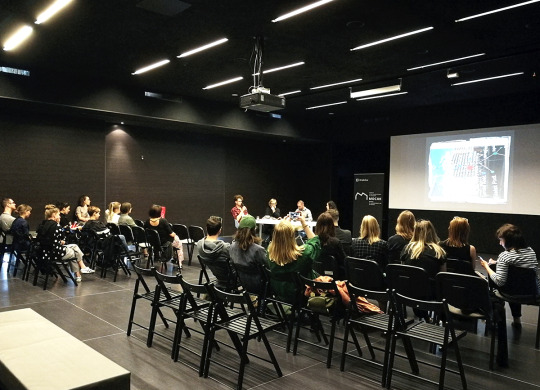
COLLABORATION NOW! SELF-PUBLISHING WORKSHOP
MOCAK, KRAKÓW, 30.05 – 02.06.19
Workshop …. Collaboration Now! International self-publishing workshop.. . is a unique formula designed for PAPERLUST Photobook Festival. As a participant you will gain basic knowledge about photobook creation from the scratch, including craft, design, editing and its function in the wider perspective of the art market. You will have a unique opportunity to work with internationally recognized artists from V4 region. Prepare for an intense experience where you will work in a group as well as directly with workshop leaders and other participating artists. You will progress by presenting your work, participating in round-table discussions and one-to-one sessions.
As a result every participant will create a dummy. This workshop will allow us to develop knowledge and consciousness about the medium of photography, photobooks, editing and narration and the use of visual language and self-expression through art. We believe visual is political and we intend to put it into the process. We will encourage emerging artists and amateurs (participants) to create visual stories, develop real skills and preserve the craft of producing a printed body of art, especially photobook.
Workshop leaders:
Katarzyna Ewa Legendź PBR| PL
Katarzyna Zolich PBR|PL
Leader from Hungary – Gábor Arion Kudász
Leader from Slovakia – Jan Sipocz
Leader from Czech Republic – Teresa Zelenkova
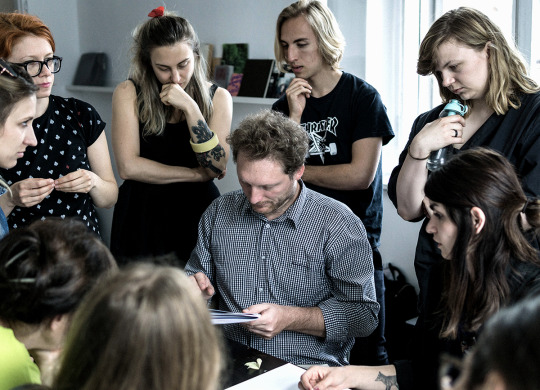
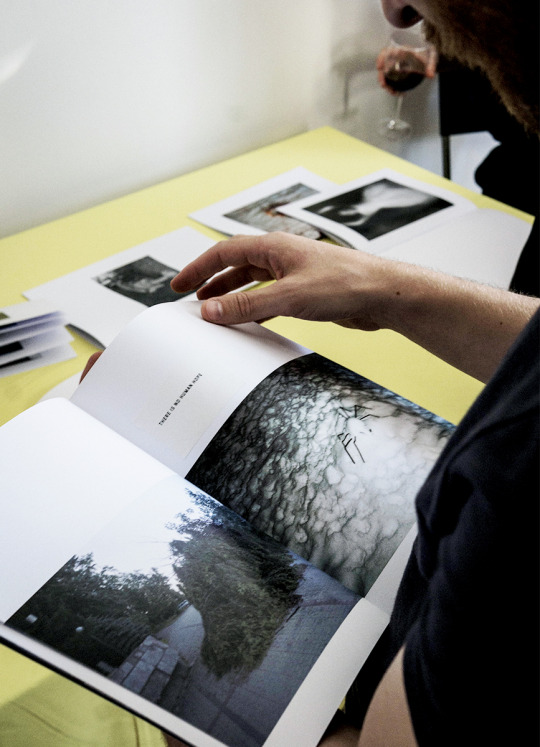
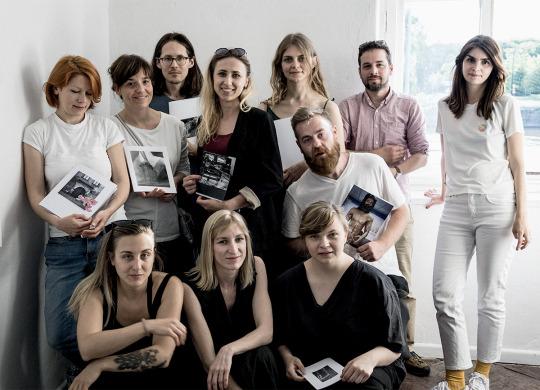
COLLABORATION NOW! SELF-PUBLISHING WORKSHOP
MOCAK, KRAKÓW, 30.05 – 02.06.19
Workshop …. Collaboration Now! International self-publishing workshop.. . is a unique formula designed for PAPERLUST Photobook Festival. As a participant you will gain basic knowledge about photobook creation from the scratch, including craft, design, editing and its function in the wider perspective of the art market. You will have a unique opportunity to work with internationally recognized artists from V4 region. Prepare for an intense experience where you will work in a group as well as directly with workshop leaders and other participating artists. You will progress by presenting your work, participating in round-table discussions and one-to-one sessions.
As a result every participant will create a dummy. This workshop will allow us to develop knowledge and consciousness about the medium of photography, photobooks, editing and narration and the use of visual language and self-expression through art. We believe visual is political and we intend to put it into the process. We will encourage emerging artists and amateurs (participants) to create visual stories, develop real skills and preserve the craft of producing a printed body of art, especially photobook.
Workshop leaders:
Katarzyna Ewa Legendź PBR| PL
Katarzyna Zolich PBR|PL
Leader from Hungary – Gábor Arion Kudász
Leader from Slovakia – Jan Sipocz
Leader from Czech Republic – Teresa Zelenkova
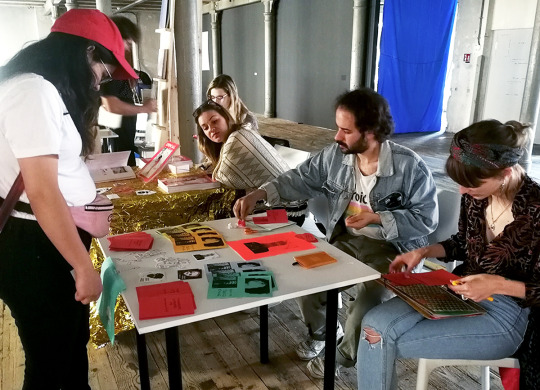

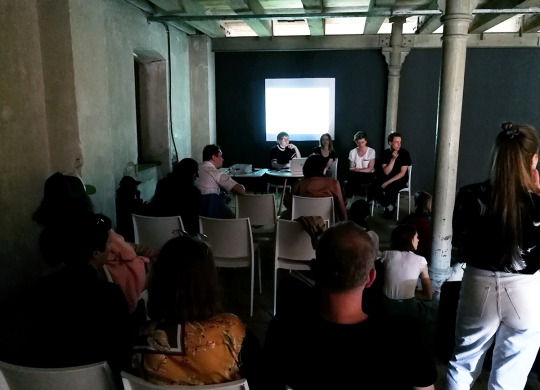
-----------
Organisers: Fresh From Poland Foundation, Paper Beats Rock Foundation
Strategic partners: FOTOGRAF Magazine (CZ), The Studio of Young Artists’ Association / FKSE (HU), ISBN könyv+galéria (HU), Hardness &Blackness (SK)
Programme curators: Katarzyna Legendź, Katarzyna Zolich
Exhibitions curators: Katarzyna Zolich, Katarzyna Legendź, Gosia Fricze, Grażyna Siedlecka, Katarzyna Roniek, Beata Istvánkó, Markéta Kinterová, Slavomíra Ondrušová
The project is co-financed by the Governments of Czechia, Hungary, Poland and Slovakia through Visegrad Grants from International Visegrad Fund. The mission of the fund is to advance ideas for sustainable regional cooperation in Central Europe.
#paperlustphotobookfest#welovepaper#paperlust#photobook#festival#art#photography#freshfrompoland#paperbeatsrock#mocak#visegrad fund#photomonth#fotograf#legendz#zolich#roniek#siedlecka#fricze#istvanko#kinterova#ondrusova#visegrad#book#artbooks#contemporary#zine#self-publishing#self-published
7 notes
·
View notes
Audio
Dlaczego chciałem zostać prezesem PGE? - odpowiada Paweł Szypulski z Greenpeace http://bit.ly/2ViKW4I
0 notes
Text
Przegląd maseczek, które chronią przed smogiem
Przegląd maseczek, które chronią przed smogiem
Bartek Jędrzejak i Filip Chajzer z “Dzień Dobry TVN” postanowili dowiedzieć się, jakie są najlepsze maseczki antysmogowe. W wyborze pomógł im Paweł Szypulski z Greenpeace Polska. Jakie maski nie sprawdzą się w ochronie dróg oddechowych przed smogiem?
View On WordPress
0 notes
Text
Paweł Szypulski: Greetings from Auschwitz (review)

Holidays and visiting places often means sending postcards home. We are keen to inform our family and friends about our whereabouts; to comment on our mood and weather. We like reassuring our loved ones that we remember them and wish them well. Even in the world where postcards are slowly disappearing, we are used to receiving holiday greetings from destinations such as Sopot and Zakopane. It is not that common, however, to see postcards sent from Auschwitz-Birkenau.
It would be hard to find someone in Poland who doesn’t recognise the metal banner of ‘Arbeit macht frei’ [Work will make you free], mounted above the gate to the Auschwitz concentration camp. Paweł Szypulski’s book Greetings from Auschwitz starts with the photograph of a number of tourists taken at this very location. The book is then leading the viewer through the gate, closing to the final point in the journey – the gas chamber – with every photograph. After ‘visiting’ the gas chamber, the viewer is taken away from the former concentration camp through the same gate again. The book ends with photographs of the ramp at which transports of prisoners were unloaded when the camp was in operation.
Additionally, the book contains multiple reproductions of postcards sent by Auschwitz’s visitors. The contrast between the vernacular, almost joyful messages written on cards and the grim subject of their front sides is striking. ‘Big kisses to both the girls’ – this message has been written on the back of the postcard that shows the aforementioned ramp. Another card’s message states: ‘Everything’s fine, all I miss is you and the sun’. Perhaps these two messages are not as distasteful as ‘A shipment of warm greetings from Auschwitz with the rustle of the summer wind’, which to some viewers might come as a crude joke.
It should not be surprising that the first reaction to the book comes as a mix of disbelief and disgust. ‘How’s that even possible? Who allowed to publish this?’ – we could ask. ‘It’s terrifying’ –said E. after looking at Szypulski’s book for the first time. Indeed, some of pairings of photographs and text are shocking. The reflection comes quickly, however: if visitors of Auschwitz were given postcards, what were they meant to do with them if not send them home? Regardless of the subject portrayed on the front, a postcard is an instrument of communication, made just to transfer information back to our families and friends.
Perhaps there is a postcard that can’t be sent? Paweł Szypulski might be suggesting this, showing the last card in the book that contains the photograph of burning bodies. This is the only photograph that was taken by the camp’s prisoners. It’s not paired with any text – and clearly wasn’t sent anywhere. It seems that not all boundaries can be crossed. This is worth remembering in the age of selfies – with images of Oświęcim often finding their way to Instagram.
Rating: Very Good (5/6)
Video presentation and Innocent Curiosity’s Vimeo Channel.
Paweł Szypulski: Greetings from Auschwitz, hardbound, 21x22cm, 88 pages, 75 photographs, Edition Patrick Frey / Fundacja Sztuk Wizualnych 2015
///
Pocztówki wysyła się zwykle z wakacji. Wyjeżdżamy nad morze lub w góry, do miejsc bliższych bądź dalszych. Informujemy stamtąd rodzinę o naszym samopoczuciu oraz pogodzie. Kierujemy do najbliższych ciepłe słowa, zaświadczające o tym, że o nich pamiętamy i dobrze myślimy. Kartki przychodzą do nas (a może bardziej przychodziły w XX wieku, bo chociaż pocztówki nie zniknęły z rynku całkowicie, to tradycja ich wysyłania powoli zanika) z takich kurortów jak Sopot czy Zakopane. Ale kto widział, żeby przesyłać pozdrowienia z Muzeum Auschwitz-Birkenau w Oświęcimiu?
Metalowy szyld „Arbeit Macht Frei” z bramy wejściowej do obozu w Auschwitz-Birkenau znają chyba wszyscy. To pod nim właśnie pozuje grupa ludzi na zdjęciu otwierającym książkę Pawła Szypulskiego. Narracja książki Pozdrowienia z Auschwitz prowadzi nas od bramy wejściowej do wnętrza komory gazowej, do której przybliżamy się z każdym kolejnym zdjęciem. Na koniec oddalamy się od zabudowań byłego obozu koncentracyjnego, co ilustrują zdjęcia bramy wjazdowej i rampy kolejowej.
Na publikację składają się reprodukcje pocztówek przedstawiające muzeum w Oświęcimiu, wysyłane przez turystów odwiedzających to miejsce. To co uderza nas w tych obiektach to zestawienie obrazów, stanowiących świadectwo dramatycznych wydarzeń z beztroskimi tekstami zawartymi na ich rewersach. Paweł Szypulski stworzył niepokojący katalog kuriozów, będący świadectwem tego, jak zmieniło się nasze podejście do obozów zagłady. Pokazuje czym stawało się Auschwitz-Birkenau w czasach masowej turystyki.
Na drugiej stronie kartki ze zdjęciem „Rampy, na której selekcjonowano transporty ludzi przywożonych na zagładę”, znajduje się tekst „Całuję mocno obydwie dziewczynki”. Nadawca innej kartki zapewnia, że „wszystko jest w porządku, brak tylko Ciebie i słońca”. O ile część pozdrowień można jeszcze jakoś zrozumieć, to już tekst „Transport gorących pozdrowień z Oświęcimia z szumem letniego wiatru” brzmi jak kiepski żart.
Pierwszą reakcją, która budzi się w nas kiedy przeglądamy tę książkę jest oburzenie. Jak tak można? Kto pozwolił na produkcję takiej „pamiątki” z muzeum? - pytamy. „To straszne” - powiedziała E., kiedy zobaczyła pierwszy raz książkę Szypulskiego. Rzeczywiście, niektóre zestawienia obrazów z tekstami są szokujące. Patrząc na to z drugiej strony - skoro ktoś dał do ręki odwiedzającym miejsce pamięci pocztówkę to co z nią mieli zrobić? Bez względu na to co przedstawia, kartka pocztowa jest koniec końców przedmiotem stworzonym do tego, żeby przekazywać informacje i łączyć nas z bliskimi.
Czy istnieje w takim razie kartka, której nie można wysłać? Autor zdaje się sugerować, że tak. Ostatnia pocztówka w książce przedstawia palenie ciał (to jedyne zdjęcie z obozu zrobione przez samych więźniów) i nie została do nikogo wysłana. Wygląda na to, że są granice, których przekroczyć nie można. Warto o tym pamiętać, w czasach kiedy selfie z Oświęcimia, z drutem kolczastym w tle lądują na Instagramie.
Ocena: Bardzo dobra (5/6)
Prezentacja wideo i kanał Innocent Curiosity na Vimeo.
Paweł Szypulski: Pozdrowienia z Auschwitz, twarda oprawa, 21x22cm, 88 stron, 75 zdjęć, Edition Patrick Frey / Fundacja Sztuk Wizualnych 2015
#paweł szypulski#pozdrowienia z auschwitz#greetings from auschwitz#edition patrick frey#fundacja sztuk wizualnych#photobook#review#innocent curiosity
1 note
·
View note
Text
Dlaczego chciałem zostać prezesem PGE? - odpowiada Paweł Szypulski z Greenpeace
from Najnowsze audycje - Radio TOK FM http://bit.ly/2ViKW4I via TOK FM
0 notes
Text
Pakiet "Lex Szyszko" - co nas jeszcze czeka? Gościem Agaty Kowalskiej był Paweł Szypulski
from Najnowsze audycje - Radio TOK FM http://bit.ly/2lYXxbT via TOK FM
0 notes
Text
Czy rządowe pomysły na walkę ze smogiem okażą się skuteczne? Paweł Szypulski i Marek Józefiak byli gośćmi Pawła Sulika
from Najnowsze audycje - Radio TOK FM http://bit.ly/2iOtr5J via TOK FM
0 notes
Photo

#RZECZoBIZNESIE: Ile kosztuje smog Dzisiejszy program #RZECZoBIZNESIE o 11.00 prowadzi Michał Niewiadomski. Jego gośćmi będą: Andrzej Gantner dyrektor generalny Polskiej Federacji Producentów Żywności, Paweł Szypulski z Greenpeace, Jacek Mecina, były wiceminister pracy oraz Liliana Anam, CSR Info
0 notes
Text
Paweł Szypulski: Greetings from Auschwitz (video)
vimeo
#paweł szypulski#greetings from auschwitz#edition patrick frey#fundacja sztuk wizualnych#innocent curiosity
0 notes